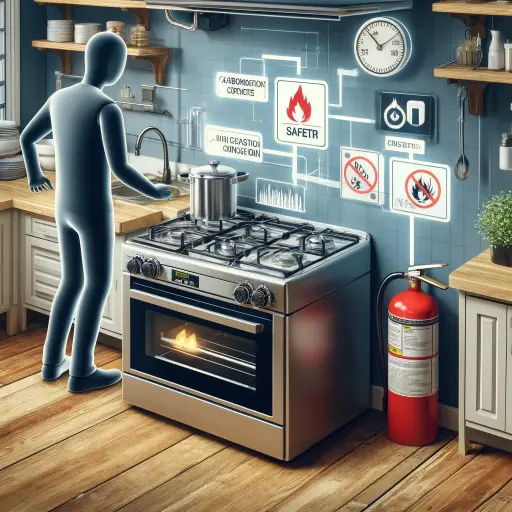Comprehensive Safety Guide for Gas Stoves
Updated: 26 Apr 2024
290
Operating a gas stove safely is crucial for preventing accidents and ensuring a secure cooking environment. This guide provides detailed instructions and tips for using your gas stove safely, from installation to everyday use and emergency response.

Gas stoves are popular in kitchens for their precise cooking control and efficiency. However, they also require careful handling to prevent fires, gas leaks, and other hazardous situations. If you adhere to the tips covered in this safety guide for gas stoves, you can avoid common dangers and maintain a safe kitchen.
Comprehensive Safety Guide for Gas Stoves
1. Installation Safety
a. Professional Installation
Always have your gas stove installed by a certified professional. This ensures that the appliance is connected correctly and complies with local safety codes and standards.
b. Proper Ventilation
Ensure that your kitchen has adequate ventilation. Good airflow is essential to avoid the buildup of harmful gases. If your kitchen does not have a built-in hood or vent, consider installing one.
c. Safety Compliant Location
Place the stove in a location that complies with safety regulations, which typically include keeping it away from flammable materials and ensuring it has sufficient clearance from cabinets and walls.
2. Daily Safety Checks
a. Inspect for Leaks
Before using your stove, check for gas leaks by smelling around the area for any unusual odors. A gas leak might smell like rotten eggs. You can also use a soap solution on the hose and connections; bubbling indicates a leak.
b. Ensure Knob Safety
Make sure all knobs are turned off when not in use. This prevents accidental gas flow, which can lead to gas accumulation and potential hazards.
c. Clear the Area
Keep the stove area clear of flammable materials, such as curtains, towels, and paper products. Also, ensure that there are no combustible items hanging above the stove.
3. Usage Guidelines
a. Monitor Cooking
Never leave cooking unattended. Unsupervised cooking is a leading cause of kitchen fires.
b. Use Proper Flame Settings
Adjust the flame so that it does not extend beyond the base of the cookware. An exposed flame is not only inefficient but also a serious fire risk.
c. Handle Cookware Safely
Always use oven mitts or pot holders when handling hot cookware. Ensure handles are turned inward to avoid accidental knocks that could tip pans over.
d. Prevent Spills
Clean up spills promptly to prevent flare-ups. Keep the stove top and burner area clean to ensure optimal operation and prevent ignition of accumulated food debris.
4. Emergency Preparedness
a. Know How to Shut Off Gas
Familiarize yourself with how to quickly turn off the gas supply to your stove. This knowledge is vital in an emergency to prevent fires or explosions.
b. Fire Extinguisher
Keep a fire extinguisher in the kitchen that is suitable for grease and electrical fires (Class K extinguishers in the US, or a multi-purpose extinguisher). Ensure everyone in the household knows how to use it.
c. Install Carbon Monoxide Detectors
Since gas stoves can emit carbon monoxide, installing a detector in the kitchen and adjacent rooms provides an additional layer of safety.
5. Regular Maintenance and Inspections
a. Annual Inspections
Have a qualified technician inspect your stove and gas lines annually to check for potential issues that could lead to safety hazards.
b. Maintain Cleaning Routine
Regular cleaning is not only important for maintenance but also safety. Ensure the burners and stove top are free of grease and food debris to prevent fires.
c. Check for Wear and Tear
Regularly inspect your stove for signs of wear, such as frayed hoses or cracked components, and replace them promptly.
Seven(7) Important Safety Tips for all Cooking Gas Users
Conclusion
By adhering to these safety guidelines, you can enjoy the benefits of your gas stove without compromising the safety of your home and loved ones. Regular maintenance, proper usage, and preparedness for emergencies are key components of a safe kitchen environment.
Always consult your gas stove’s user manual for specific safety tips and instructions tailored to your model. Remember, safety is a daily commitment and is essential to preventing accidents and ensuring a safe and enjoyable cooking experience
Please Write Your Comments